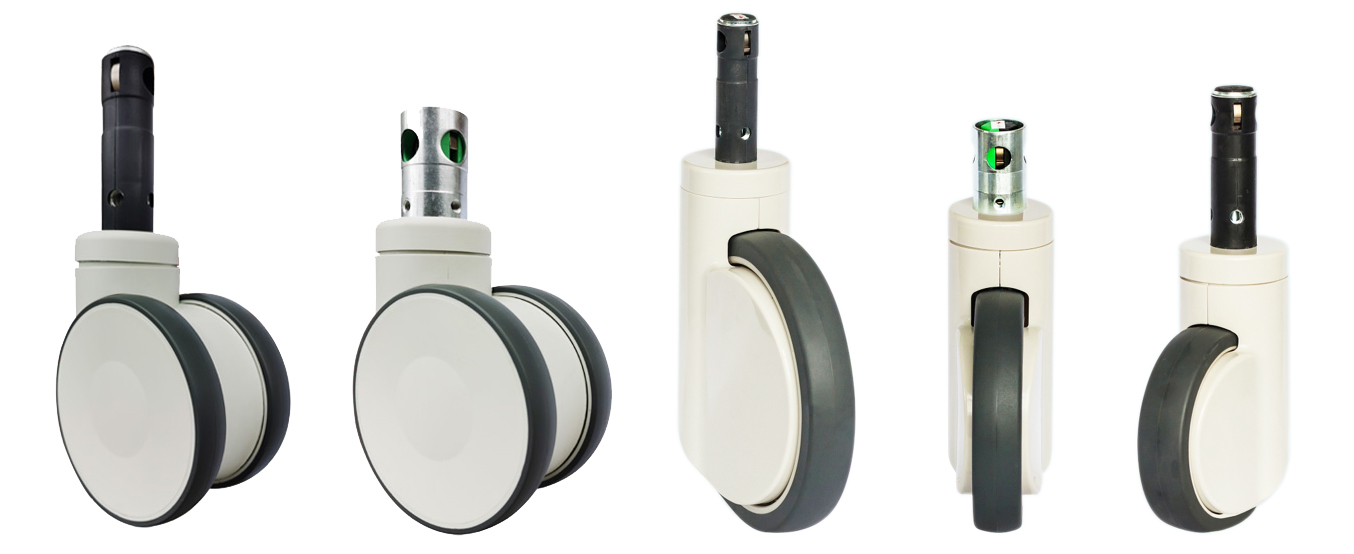Why medical casters become more and more popular
Medical casters, also known as medical wheels or hospital casters, have indeed become increasingly popular in recent years. This surge in popularity can be attributed to several factors, including advancements in healthcare technology, increased demand for patient mobility, improved ergonomics, and a greater focus on infection control. In this response, we will explore these reasons in more detail.
Firstly, advancements in healthcare technology have played a significant role in the rising popularity of medical casters. The medical industry has experienced remarkable progress, with new and innovative equipment being developed to enhance patient care. These advancements have led to the creation of specialized medical devices such as mobile medical carts, hospital beds, and surgical tables that require smooth and effortless mobility. Medical casters, designed specifically for these applications, offer excellent maneuverability, stability, and ease of movement, supporting the functionality of these advanced medical devices.
Secondly, the demand for patient mobility has increased significantly in recent years. Hospitals and healthcare facilities are now placing a greater emphasis on patients' early mobilization, recognizing the benefits it brings to their overall health and recovery. Medical casters play a crucial role in facilitating this mobility by enabling healthcare professionals to move patients safely and comfortably. Whether it's transferring patients from one bed to another, repositioning them during procedures, or aiding in bedside care, medical casters provide the necessary mobility solutions.
Furthermore, medical casters have seen a rise in popularity due to their improved ergonomic features. Healthcare professionals often face physically demanding tasks that require frequent pushing, pulling, and maneuvering of heavy equipment or hospital furniture. The design of medical casters has evolved to address these issues, offering features such as ergonomic handles, swivel locks, and non-marking materials to reduce strain and provide better control during movement. These ergonomic improvements not only enhance the user experience but also contribute to the overall safety and well-being of healthcare workers.
In addition, the growing awareness of infection control measures has propelled the popularity of medical casters. Healthcare-associated infections (HAIs) pose a significant challenge to patient safety and recovery within healthcare settings. Medical casters made from materials with antimicrobial properties or those that are easy to clean and disinfect have gained traction in the market. These casters help mitigate the risk of cross-contamination by reducing the survival and transmission of harmful pathogens, ultimately contributing to a safer healthcare environment.
Moreover, the evolving requirements of specialized medical environments have also driven the demand for specific types of medical casters. For instance, operating rooms, where sterility is paramount, necessitate casters resistant to high-temperature sterilization methods like autoclaving. Similarly, critical care areas such as intensive care units (ICUs) demand casters that offer smooth and silent movement to minimize disturbances. The availability of medical casters tailored to meet such specialized needs has further fueled their popularity.
Lastly, the growing focus on patient-centered care and the overall enhancement of healthcare facilities have led to an increased emphasis on the aesthetics and functionality of medical equipment. Medical casters, once considered mundane components, are now being designed to complement the overall visual appeal of the equipment they support. Manufacturers are offering a variety of styles, sizes, and finishes to match the aesthetic requirements of modern healthcare environments, making them more attractive to healthcare providers.
In conclusion, the increasing popularity of medical casters can be attributed to advancements in healthcare technology, the demand for patient mobility, improved ergonomics, the focus on infection control, specialized requirements, and the emphasis on aesthetics. These factors have collectively highlighted the importance of medical casters in ensuring efficient and safe healthcare operations. As the healthcare industry continues to evolve, we can expect further innovations and advancements in medical caster design to meet the ever-changing needs of healthcare professionals and patients alike.


 English
English Spanish
Spanish German
German Russian
Russian Arabic
Arabic Portuguese
Portuguese Italian
Italian French
French Hebrew
Hebrew Turkish
Turkish